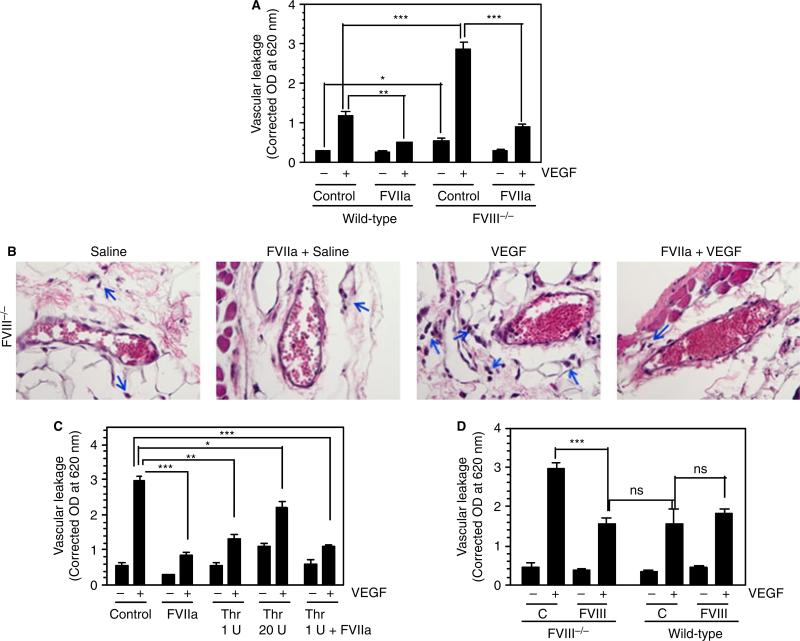Fig. 7.
Increased vascular leakage in hemophilia is corrected by administration of therapeutic concentrations of FVIIa. (A) Wild-type or FVIII−/− mice were treated with saline (control) or FVIIa (120 μg kg−1 body weight) by injection via the tail vein. Thirty minutes later, saline or vascular endothelial growth factor (VEGF) (50 ng) was injected intradermally, and VEGF-induced vascular leakage was measured as described in Materials and methods (n = 8 mice/group). (B) FVIII−/− mice were treated with saline or FVIIa, and then injected with VEGF as in (A). Skin tissue sections were stained with hematoxylin and eosin. Arrows indicate leukocytes that leaked into the tissue. The sections shown are representative of six mice per group. (C) FVIII−/− mice were treated with saline (control), FVIIa (120 μg kg−1 body weight), thrombin (Thr) (1 U or 20 U kg−1 body weight [0.25 or 5 μg kg−1 body weight]), or FVIIa + Thr (120 μg + 1 U kg−1 body weight), and then injected with VEGF (three to seven mice per group). (D) FVIII−/− or wild-type mice were injected via the tail vein with saline or FVIII (200 U kg−1 body weight). Thirty minutes later, saline or VEGF (50 ng per site) was injected intradermally (five mice per group). VEGF-induced vascular leakage was measured as described in Materials and methods. *P < 0.05; **P < 0.01; ***P < 0.001. C, control; NS, no statistically significant difference.

